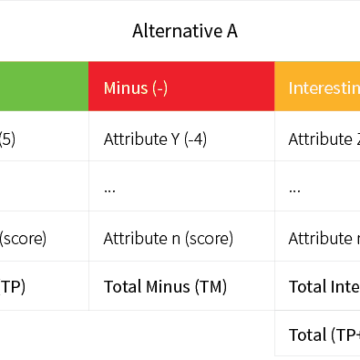PMI lists Plus (positive attributes), Minus (negative attributes) and Interesting (interesting attributes) for a certain alternative and scores them.


PMI lists Plus (positive attributes), Minus (negative attributes) and Interesting (interesting attributes) for a certain alternative and scores them.
Card sort is a technique which ranks alternatives on intuition by shuffling them step by step. There are different variations possible, by assigning values to a collection of alternatives or just by shuffling them on intuition. This technique shuffles ideas one by one to select a certain set. Next to ideas, you can also use […]
The product criteria checklist helps to determine objectives based on predefined categories. Use this technique to determine a list of objectives for physical product development.
In the castle technique, each idea is voted yes or no, based on the criteria of acceptability, practicality and originality. It is a technique which is suitable for groups. There are different variations possible how this technique can be executed. For example, it is also possible to select the best three alternative, develop these further […]

Reverse brainstorming generates solutions to criticisms for alternatives. This is done by listing all criticisms and solving these criticisms with new alternatives.